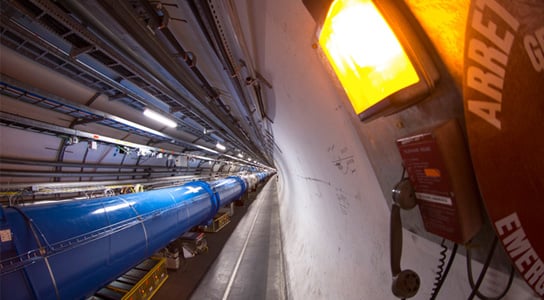So far, there have been no hints beyond the Standard Model of Particle Physics from the LHC. A recent conference in Kyoto, Japan, ruled out another broad class of supersymmetry models, finding nothing unexpected in the rates of particle decays. Many SUSY proponents are left to consider new theories. In the past 20 to 30 years, SUSY has been used abundantly and it’s hard to come to grips with its failure, which will have major implications in the field. SUSY is intriguing because it predicts the existence of particles that could constitute dark matter, which permeates the outskirts of galaxies and cosmic filaments. It unifies the three fundamental forces at high energies and one of the biggest reasons for studying SUSY is that it solves the hierarchy problem. This problem arises from the disparity between gravity and the weak nuclear force. Particles carrying the weak forces, W and Z bosons, derive their masses from the Higgs field saturating all space. It’s unclear why the energy of the Higgs field, and therefore the masses of the W and Z bosons, isn’t greater. Because other particles are intertwined with the Higgs field, their energies should spill into it during events known as quantum fluctuations. This should drive up the energy of the Higgs field, making W and Z bosons more massive and rendering the weak nuclear force as weak as gravity. SUSY solves this problem by theorizing the existence of a superpartner for each elementary particle. Fermions may have superpartners that are bosons and existing bosons have fermion superpartners. Since particles and their superpartners are of opposite types, their energy contribution to the Higgs field have opposite signs. The pair’s contributions are canceled out, resulting in no effect on the Higgs field. One of the undiscovered superpartners could make up dark matter. As superpartners have failed to materialize, SUSY has become less beautiful. In order to evade detection, the mainstream models state that superpartner particles would have to be much heavier than their twins, skewing the symmetry. It was thought in the 1980s that superpartners would be only slightly heavier that the known particles, but the Tevatron, the retired particle acceleration at Fermilab, in Batavia, Illinois, found no such evidence. The LHC at CERN, Geneva, probes at increasingly higher energies without any evidence of SUSY. The remaining SUSY theories predict superpartners so heavy that they would overpower the effects of their lighter twins, if it weren’t for the fine-tuned cancellations between various superpartners. However, the introduction of fine-tuning in order to scale back the damage and to solve the hierarchy problem makes some physicists uncomfortable. This is probably one of the reasons why scientists should reexamine why SUSY was first introduced and try to come up with new models that will go beyond the Standard Model.
